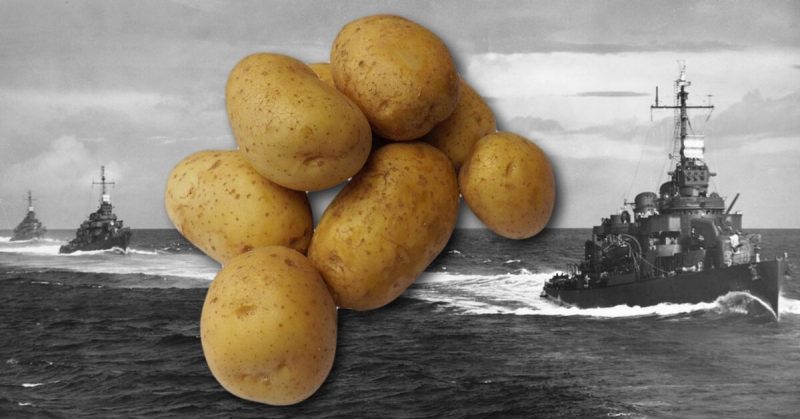It is not always superior weapons, numbers, or tactics that win battles. In this case, of all things, it was potatoes!
After the Japanese had bombed Pearl Harbor in December 1941, they seemed unstoppable. While their Axis partners the Nazis ravaged Europe, the Japanese wrecked havoc in the Asia-Pacific. The US military at that time was nowhere near the capacity it is today.
Fortunately, the USS O’Bannon was not among those damaged or destroyed as she was not in Hawaii.
Laid down on March 3, 1941, at the Bath Iron Works Corp, Maine, she was launched the following year on February 19. The ship was named after First Lieutenant Presley Neville O’Bannon – the “Hero of Derna” during the First Barbary War. He had impressed friends and foe alike – making the ship aptly named.
An impressive ship, she was, too. A Fletcher-class destroyer, O’Bannon measured 376-feet 6-inches in length, with a beam of 39-feet 8-inches, a draft of 17-feet 9-inches, and displaced 2,050 tons. With her two 60,000 shp (45 MW) propellers, she could travel at up to 35 knots (40.27 mph). However, it was not speed she was built for; it was destruction.
There was little the O’Bannon could not handle. She was armed with 127 mm/38 cal. guns, 10 × 40 mm AA guns, 7 × 20 mm AA guns, 10 × 21 inch torpedo tubes, six depth charge projectors, and two depth charge tracks. She was sent to fight in the Guadalcanal Campaign.
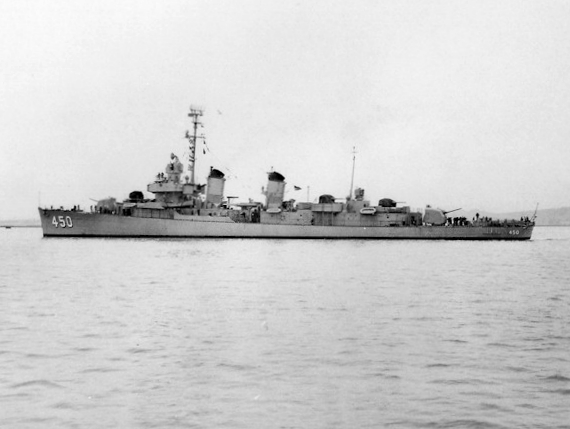
With America fighting on several fronts, the US was stretched thin. The O’Bannon was attached to the Destroyer Squadron 21 (DesRon 21) based at Nouméa, New Caledonia. There she was kept busy providing transportation, escort duty, and reinforcement throughout the Pacific.
On August 7, 1942, US forces landed on the Japanese-occupied islands of Guadalcanal, Tulagi, and Florida in the southern Solomon Islands. It was the first major Allied offensive against Japan – ensuring the latter could no longer easily threaten Allied access between the US, Australia, and New Zealand.
Japan had lost the vital Runga Point Airfield they had built on Guadalcanal (which the Americans renamed Henderson), and they wanted it back. On November 12, they attacked the island with 16 torpedo bombers, four of which were shot down by the O’Bannon.
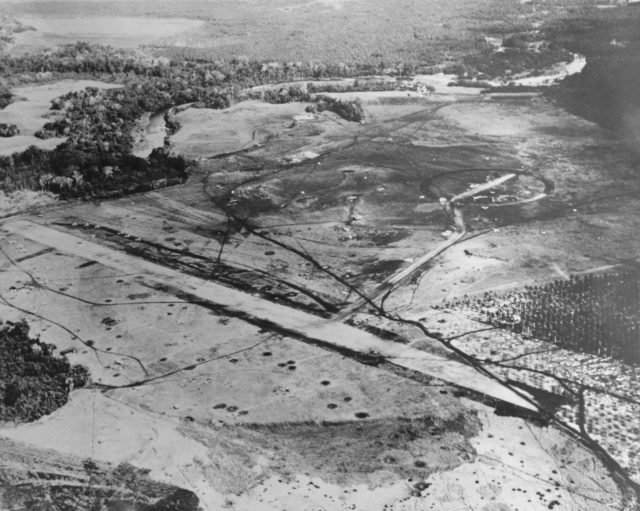
As the Japanese could not retake Henderson, they wanted it gone. The next day, they sent 14 destroyers, two battleships, and a light cruiser to destroy the airfield – greatly outnumbering the US forces there. Without their airstrip, the US were vulnerable.
Among the Japanese fleet was the Kongō-class battlecruiser, Hiei. A behemoth, it was almost double the length of the O’Bannon and just as nastily armed. It had escorted the six carriers that had taken part in the bombing of Pearl Harbor. Seeing it, the O’Bannon attacked.
The American vessel zoomed in on the Hiei. The O’Bannon was so close and rode so much lower in the water all the Japanese ship could do was to fire in the air above the smaller ship. Not so the O’Bannon which fired away. It was like shooting a duck in a barrel.
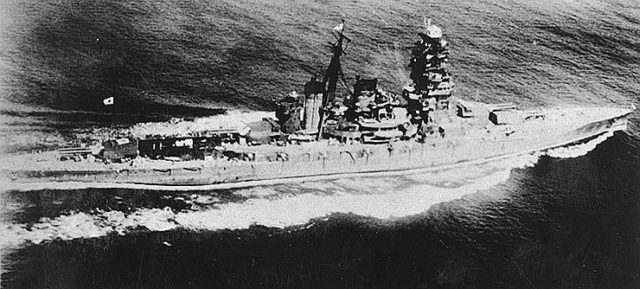
The Hiei was so severely damaged it quickly fell prey to US planes. Eventually, the rest of the Japanese fleet retreated after heavy losses. Fortunately, Henderson airfield had remained intact, and planes took off the very next day to sink eleven more enemy troop transport ships.
Two years later the O’Bannon had to use a secret weapon – not one approved for use by the US government. The circumstances were so unusual, however, she had no choice.
The Ro-34 was a Kaichū type submarine measuring 239-feet 6-inches long, with a beam of 22-feet, and a draft of 10-feet 8-inches. Besides its complement of torpedoes, its deck was armed with one 76 mm anti-aircraft gun and one 13.2 mm anti-aircraft machine-gun.
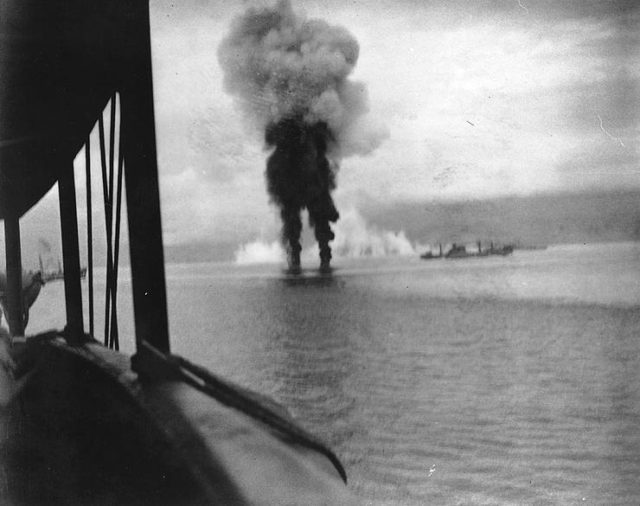
On April 5, 1944, the Ro-34 sub was cruising on the surface of the South Pacific. On her deck were soldiers of the Imperial Japanese Navy. The O’Bannon prepared to ram it, but at the last minute, the ship’s officers diverted their course believing the sub might be a minelayer.
The ship turned so hard it was directly beside the submarine’s deck. To prevent the Japanese from firing their deck guns at them, the American sailors grabbed the only thing on deck they had – potatoes. They flung them at the Japanese who went into a panic. Probably thinking they were hand grenades, they abandoned their guns, grabbed the spuds, and either threw them overboard or back at the O’Bannon.
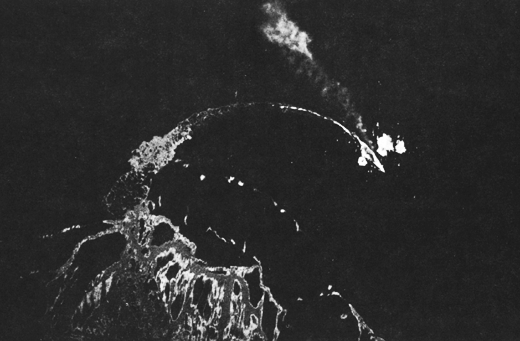
Due to the quick thinking of their crew, the Americans had put enough distance between themselves and the Japanese to open fire. The Ro-34 disappeared beneath the waves to get away, but the O’Bannon sank it with depth charges. Japanese planes tried to assist their sub, but the O’Bannon fired destroying two of their aircraft as well.
There were more battles after that, making the O’Bannon the most decorated ship in WWII with 17 battle stars and a Presidential Unit Citation.
The Association of Potato Growers of Maine also honored the ship with a plaque – which is why that strange battle is today called the Maine Potato Episode.
